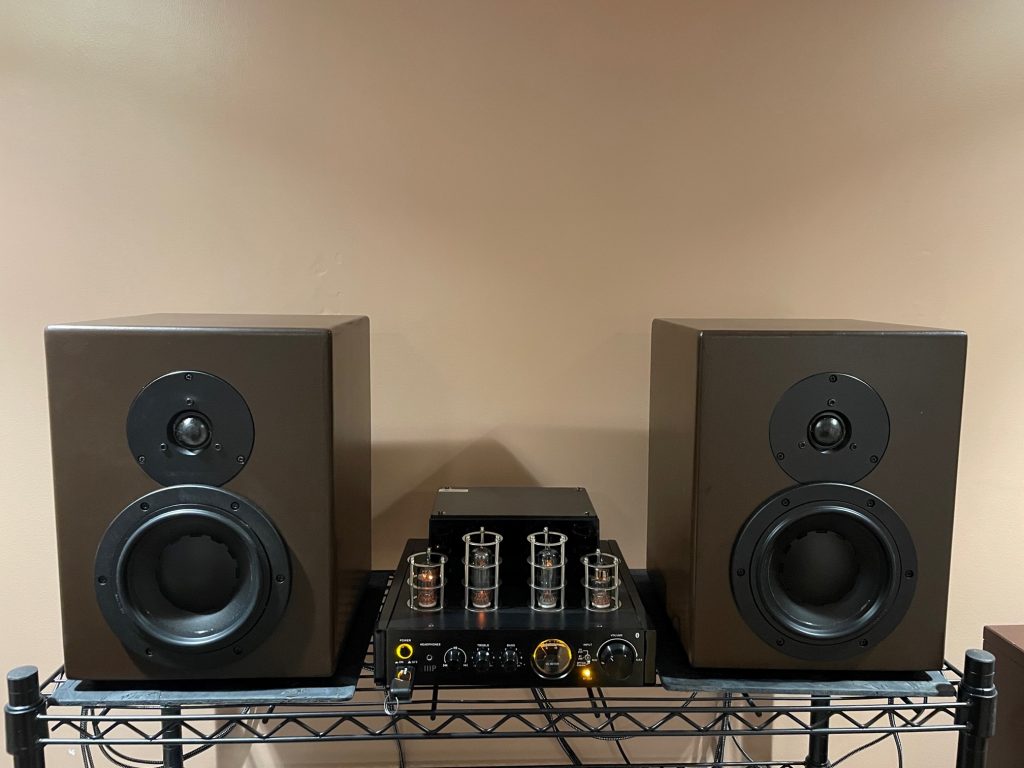
Dynavox 2-Way
Designer:
Tom Denton
Project Category:
Bookshelf Speakers
Project Level:
Beginner
Project Time:
1-8 Hours
Project Cost:
$100 – $500
Project Description:
2-Way bookshelf speakers
Design Goals:
Make a set of bookshelf speakers for under $300.00 that had a great low bass sound.
Driver Selection:
Dynavox LW6004PMR-N 6-1/2″ Poly Cone Woofer
Dynavox TD2801XL 1-1/8″ Silk Dome Tweeter
Enclosure Design:
I used a standard 2-way box design with inside bracing & laminated foam insulation.
Enclosure Assembly:
3/4″ MDF with 1/4″x1/4″ slot and rabbet for the sides. 1/4″ rabbet for both front and back to snugly fit these into enclosure housings. 2″ x 4″ pvc port tube on rear baffle. Gold plated binding posts.
Crossover Design:
I used X-Sym to design a simple crossover.
Tips & Tricks:
None, just followed many forums and took their advice as it applied to what I was doing.
Conclusion:
These ended up having more bass from a such a small 6-1/2″ driver than I could have ever though them having. Already have 2 orders from friends to make more.
About the Designer:
I have been doing many woodworking products for years and wanted to make a decent pair of bookshelf speakers.
Project Parts List:
|
Part # |
Description |
Qty |
|
295-620 |
Dynavox LW6004PMR-N 6-1/2″ Poly Cone Woofer |
1 |
|
257-028 |
Dayton Audio 0.30mH 20 AWG Air Core Inductor Crossover Coil |
1 |
|
027-428 |
Dayton Audio DMPC-10 10uF 250V Polypropylene Capacitor |
1 |
|
027-430 |
Dayton Audio DMPC-12 12uF 250V Polypropylene Capacitor |
1 |
|
005-2 |
Mills 2 Ohm 12W Non-Inductive Resistor |
1 |

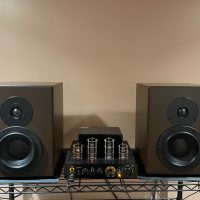
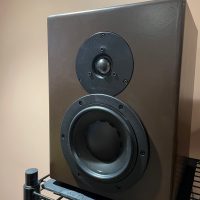
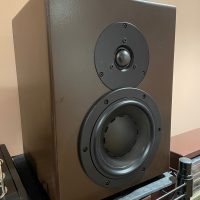
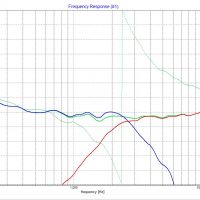
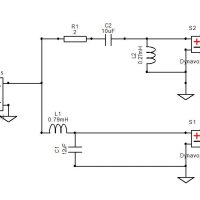
Would please provide information on the box?
What is the volume?
What are the dimensions?
Thank you.
This is a splendid example of beautiful woodworking, with a clean design, using quality products. I seldom give a review, but I love your build. Did you use the second inductor shown in the schematic? It is not in the parts list. What is the internal volume of the enclosure, less the braces or better yet the dimensions? I would like to enter all the data into bass box pro to discover what the F3, vent velocity, custom amplitude response below 100 Hz at max input power, and the cone displacement.
If you reveal the volume or dimensions, I would be happy to share my findings.
Yours is the best job I have seen for a novice, and I have been a speaker builder and designer for over 60 years. You are not a beginner anymore.
I see in your frequency response graph an output of about 85dB.
I would expect as a quick approximate of output about 106dB using power of 50 watts RMS, sensitivity of 88.8dB SPL, and Output = 10 * Log 50 +88.8. That is loud enough for me. We will see if that holds up under further scrutiny.
What is the designed crossover frequency?
You left out two important specifications: Enclosure dimensions and L1 (.79mH) wire gauge
Sorry this has taken me so long to return info on this. The outside box dimensions are 10″ wide x 12″ high x 9″ deep using 3/4″ MDF. I used #14 OFC polyethylene jacketed stranded wire. The crossover frequency on this is around 2650hz. The bracing inside is a 1″ poplar dowel recessed in and located in the center of the box. I used 2″ wide x 2-1/2″ long 45 degree braces on the center of all 4 corners inside the box. The foam insulation is a 12″x12″x1″ thick laminated combination open & closed cell foam sheet from McMaster-Carr (#85105K15). I did use all the inductors as listed on the crossover, just missed it when typing out my parts list. These have now had well over a year of listening time on them and they sound much better now than they did when I made them. Most people cannot believe the bass I get out of these, they look for a sub-woofer connected to it.